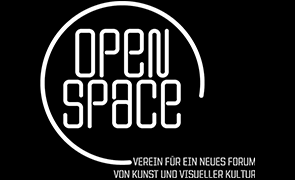The first part of the exhibition starts to sketch out an answer to this question. It displays a study of Anatolia’s first cultivars, the first dams and lakes that were built near the nation’s capital. Construction of the famous Çubuk Dam, for example, was completed in 1936, under the leadership of Atatürk during the state’s Republican era. Demirtaş uses the Çubuk Dam as a symbol to show how notions of development and progress dominated political discourse in Turkey in the nation’s founding years, and how these notions still dominate the mindset of the Turkish citizen today. Construction of this dam and other monuments to industry were viewed as integral to the process of building a fledging new republic in 1923, after the fall of the Ottoman Empire and the trauma of two devastating wars. Seen as a shining symbol of development, the Çubuk Dam became a national treasure. Newspaper clippings from the 1930s and 1940s are on view, showing how the Turkish media lauded the dam, referring to it as the “Bosphorus of Ankara.” A display of family photographs from the 1940s and 1950s illustrate how the dammed lake became a site of leisure for many Turkish citizens who would pay it homage on weekend outings. The Çubuk Dam supplied Ankara with clean drinking water for nearly sixty years, but closed in 1994, after erosion polluted its waters, then deemed undrinkable. Although its story may illustrate just how unsustainable the HEPPs are for supplying the nation with its long-term water and energy needs, the Turkish government continues to invest in their proliferation, with little opposition from the public.
Miniature models of some of Anatolia’s largest man-made lakes are recreated as glass sculptures in the central portion of the exhibition. The sculptures appear to have been pinned onto their shiny black pedestals with metal rods, in perhaps another allusion to the grafting process. Their delicate constructions are composed from sheets of glass so that they look like elevation models, showing the depth of each lake as well as its perimeter. The sleek design of the exhibition lends it the look of an affluent corporate environment, and the glass sculptures bear a resemblance to crystal trophies in a CEO’s office, like miniature monuments to corporate conquest. The extremely delicate yet precious appearance of the glass objects calls attention to the fragility of the artificial lakes as well as their environmental cost.
A video interview between Demirtaş and Süleyman Demirel, a former prime minister of Turkey, draws further parallels between state politics and the state’s industrialization program, focusing on a later phase of the country’s economic development. Demirel is a talented orator, and utilizes the rhetoric of national progress to tie the past into the present in order to justify continued state support of the construction of the HEPPs. He gives an inspiring speech about visiting the Hoover Dam during a trip to the United States and wanting to build a structure that could harness a similar amount of power and energy within his own country. He then launches into a motivational story about how the construction of dams in Turkey in the 1960s and 70s helped combat the flooding of villages and lifted rural populations out of poverty by bringing them electricity and agriculture. What Demirel does not elaborate upon however, is how Turkey’s adoption of neoliberal policies in the 1980s put politics at the service of capitalist development at the expense of the nation’s conservation and environmental laws. He draws a strategic yet deceptive link between the nation’s past industrialization program, which supplied the nation and its people with basic infrastructural needs, and its present and future rates of industrialization, drastically advanced in order to support the growth of an export oriented-economy. The fact is that the benefits offered to corporate interests in such an economy often take priority over the public’s basic needs, such as access to clean air and water, not to mention access to natural preserves and other habitats that have not been sullied by development.
Graft (Aşı) looks through the lens of a changing topography to chart the processes through which the Turkish state’s industrialization program has been tied to issues of national progress. The various components of the exhibition illustrate how the country’s advanced rates of industrialization are drastically altering its physical landscape. The exhibition does not overtly state what the long-term effects of such an alteration may be, but it does lodge this question in visitors’ minds. Through the inclusion of the Çubuk Dam, it shows how Turkish citizens learned to recognize themselves as both the actors and the beneficiaries of that progress during the nation’s industrializing years. Changing socio-economic and environmental concerns, however, may necessitate breaking with the political rhetoric of the past to articulate new definitions of progress that can envision a more sustainable future.
Berin Golonu is a doctoral candidate in the Graduate Program in Visual and Cultural Studies at the University of Rochester.





